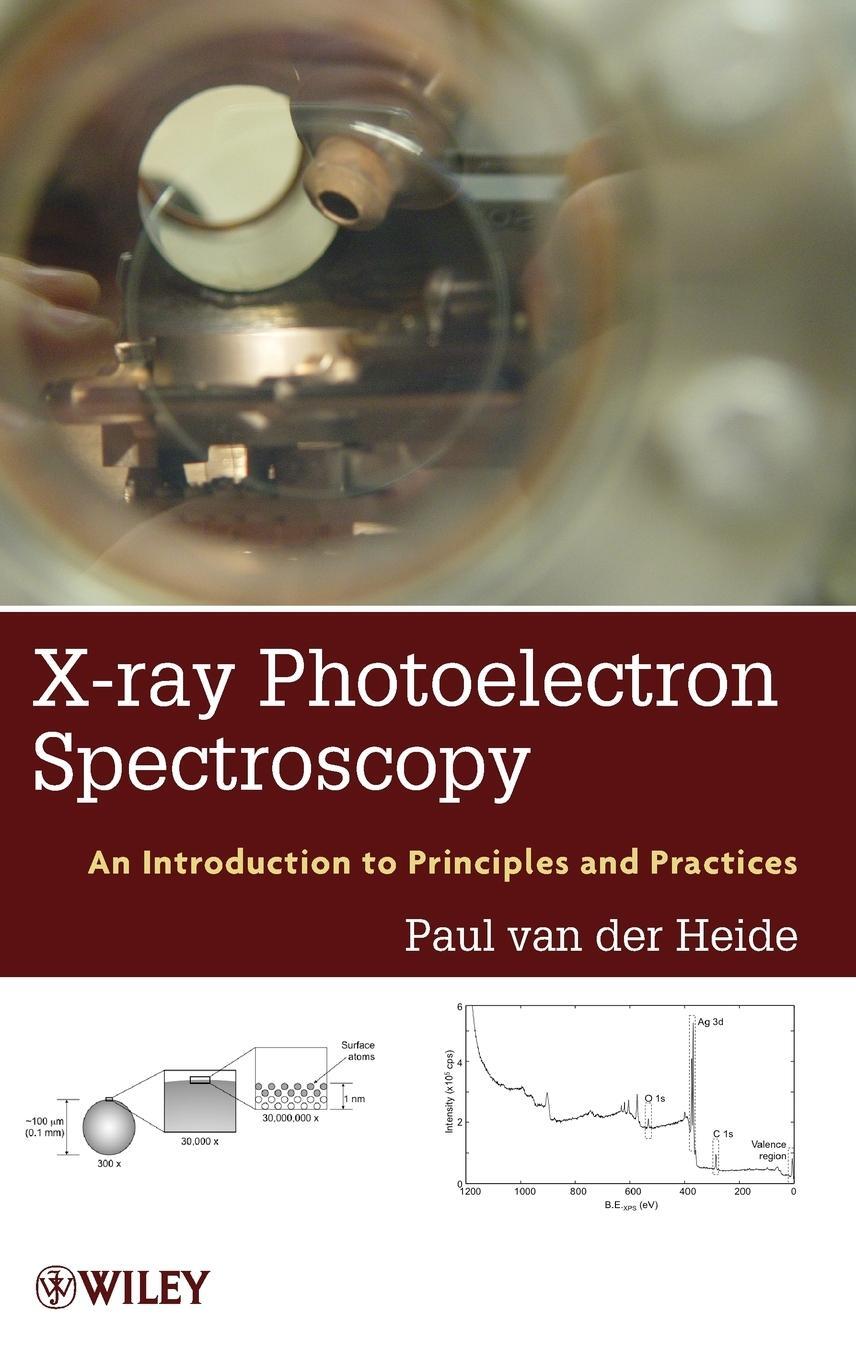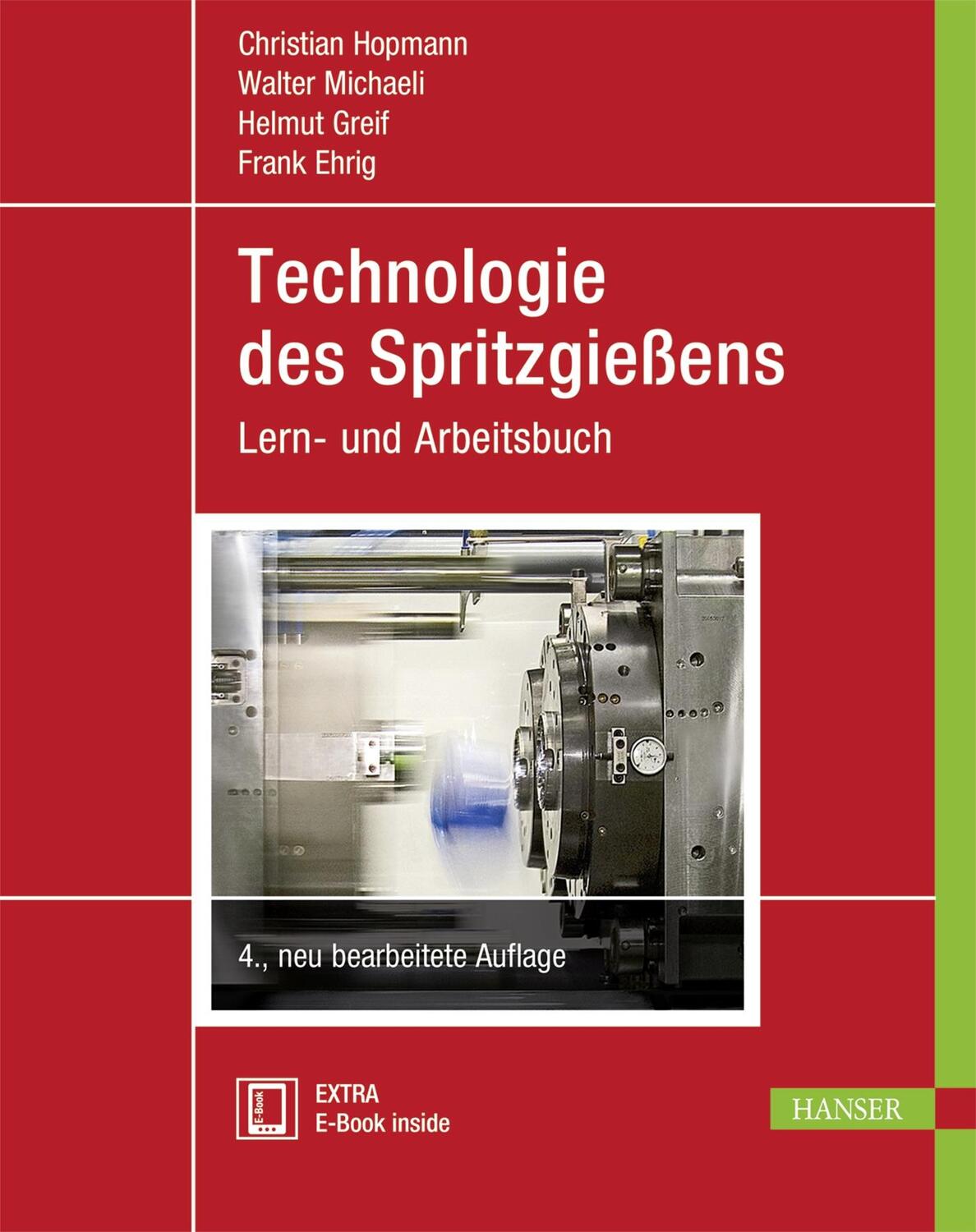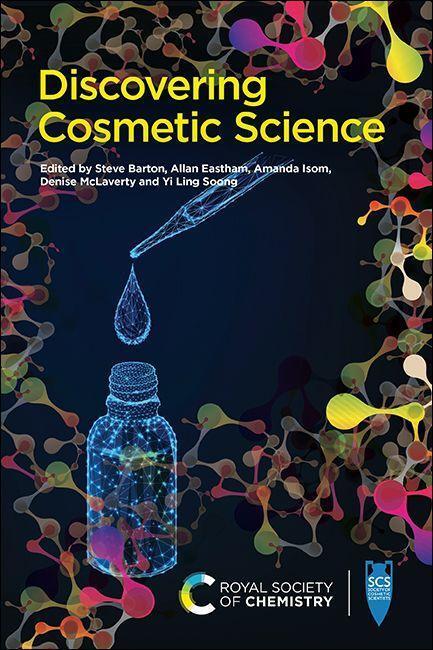111,50 €*
Versandkostenfrei per Post / DHL
Aktuell nicht verfügbar
This is presented in a concise yet comprehensive manner and each section is prepared such that they can be read independently of each other, and all equations are presented using the most commonly used units. Greater emphasis has been placed on spectral understanding/interpretation. For completeness sake, a description of commonly used instrumentation is also presented. Finally, some complementary surface analytical techniques and associated concepts are reviewed for comparative purposes in stand-alone appendix sections.
This is presented in a concise yet comprehensive manner and each section is prepared such that they can be read independently of each other, and all equations are presented using the most commonly used units. Greater emphasis has been placed on spectral understanding/interpretation. For completeness sake, a description of commonly used instrumentation is also presented. Finally, some complementary surface analytical techniques and associated concepts are reviewed for comparative purposes in stand-alone appendix sections.
Dr. van der Heide currently serves as the Group Lead of the Surface Analysis department at Samsung Austin, Texas which houses state-of-the-art XPS, AES, SIMS and AFM instrumentation. Former Assistant Professor, Chemistry Department, University of Houston, TX.
PREFACE xiii
ACKNOWLEDGMENTS xv
LIST OF CONSTANTS xvii
1 INTRODUCTION 1
1.1 Surface Analysis / 1
1.2 XPS/ESCA for Surface Analysis / 5
1.3 Historical Perspective / 6
1.4 Physical Basis of XPS / 7
1.5 Sensitivity and Specifi city of XPS / 10
1.6 Summary / 11
2 ATOMS, IONS, AND THEIR ELECTRONIC STRUCTURE 13
2.1 Atoms, Ions, and Matter / 13
2.1.1 Atomic Structure / 14
2.1.2 Electronic Structure / 15
2.1.2.1 Quantum Numbers / 16
2.1.2.2 Stationary-State Notation / 18
2.1.2.3 Stationary-State Transition Notation / 20
2.1.2.4 Stationary States / 21
2.1.2.5 Spin Orbit Splitting / 23
2.2 Summary / 25
3 XPS INSTRUMENTATION 27
3.1 Prerequisites of X-ray Photoelectron Spectroscopy (XPS) / 27
3.1.1 Vacuum / 28
3.1.1.1 Vacuum Systems / 32
3.1.2 X-ray Sources / 35
3.1.2.1 Standard Sources / 37
3.1.2.2 Monochromated Sources / 39
3.1.2.3 Gas Discharge Lamps / 41
3.1.2.4 Synchrotron Sources / 41
3.1.3 Electron Sources / 42
3.1.3.1 Thermionic Sources / 42
3.1.4 Ion Sources / 43
3.1.4.1 EI Sources / 43
3.1.5 Energy Analyzers / 44
3.1.5.1 CMA / 46
3.1.5.2 CHA / 46
3.1.5.3 Modes of Operation / 47
3.1.5.4 Energy Resolution / 48
3.1.6 Detectors / 49
3.1.6.1 EMs / 50
3.1.7 Imaging / 52
3.1.7.1 Serial Imaging / 52
3.1.7.2 Parallel Imaging / 54
3.1.7.3 Spatial Resolution / 56
3.2 Summary / 59
4 DATA COLLECTION AND QUANTIFICATION 61
4.1 Analysis Procedures / 61
4.1.1 Sample Handling / 62
4.1.2 Data Collection / 64
4.1.3 Energy Referencing / 65
4.1.4 Charge Compensation / 69
4.1.5 X-ray and Electron-Induced Damage / 71
4.2 Photoelectron Intensities / 72
4.2.1 Photoelectron Cross Sections / 74
4.2.2 The Analyzed Volume / 75
4.2.2.1 Electron Path Lengths / 76
4.2.2.2 Takeoff Angle / 79
4.2.3 The Background Signal / 80
4.2.4 Quantification / 81
4.3 Information as a Function of Depth / 83
4.3.1 Opening up the Third Dimension / 84
4.3.1.1 AR-XPS and Energy-Resolved XPS / 84
4.3.1.2 Sputter Depth Profi ling / 87
4.4 Summary / 97
5 SPECTRAL INTERPRETATION 101
5.1 Speciation / 101
5.1.1 Photoelectron Binding Energies / 102
5.1.1.1 The Z + 1 Approximation / 106
5.1.1.2 Initial State Effects / 107
5.1.1.3 Final State Effects / 118
5.1.1.4 The Auger Parameter / 133
5.1.1.5 Curve Fitting / 135
5.2 Summary / 138
6 SOME CASE STUDIES 141
6.1 Overview / 141
6.1.1 Iodine Impregnation of Single-Walled Carbon Nanotube (SWNT) / 142
6.1.2 Analysis of Group IIA-IV Metal Oxides / 145
6.1.3 Analysis of Mixed Metal Oxides of Interest as SOFC Cathodes / 151
6.1.4 Analysis of YBCO and Related Oxides/Carbonates / 156
6.2 Summary / 163
APPENDICES 167
APPENDIX A PERIODIC TABLE OF THE ELEMENTS 169
APPENDIX B BINDING ENERGIES (B.E.XPS OR B.E.XRF) OF THE ELEMENTS 171
B.1 1s-3s, 2p-3p, and 3d Values / 171
B.2 4s-5s, 4p-5p, and 4d Values / 175
APPENDIX C SOME QUANTUM MECHANICS CALCULATIONS OF INTEREST 177
APPENDIX D SOME STATISTICAL DISTRIBUTIONS OF INTEREST 181
D.1 Gaussian Distribution / 182
D.2 Poisson Distribution / 182
D.3 Lorentzian Distributions / 183
APPENDIX E SOME OPTICAL PROPERTIES OF INTEREST 185
E.1 Chromatic Aberrations / 186
E.2 Spherical Aberrations / 186
E.3 Diffraction Limit / 186
APPENDIX F SOME OTHER SPECTROSCOPIC/SPECTROMETRIC TECHNIQUES OF INTEREST 189
F.1 Photon Spectroscopies / 191
F.1.1 IR, RAIRS, ATR, and DRIFTS / 191
F.1.2 Raman, SERS, and TERS / 192
F.1.3 EDX and WDX / 193
F.1.4 XRF and TXRF / 194
F.2 Electron Spectroscopies / 195
F.2.1 UPS / 195
F.2.2 AES / 195
F.2.3 EELS, REELS, and HREELS / 196
F.3 Ion Spectroscopies/Spectrometries / 196
F.3.1 SIMS / 196
F.3.2 TAP / 197
F.3.3 Ion Scattering Methods / 197
APPENDIX G SOME MICROSCOPIES OF INTEREST 199
G.1 SEM / 200
G.2 HIM / 201
G.3 TEM / 201
G.4 SPM (AFM and STM)-Based Techniques / 202
APPENDIX H SOME REFLECTION/DIFFRACTION TECHNIQUES OF INTEREST 205
H.1 XRD / 206
H.2 GID / 206
H.3 XRR / 207
H.4 LEED / 207
H.5 RHEED / 207
TECHNIQUE ABBREVIATIONS LIST 209
INSTRUMENT-BASED ABBREVIATIONS 213
GLOSSARY OF TERMS 215
QUESTIONS AND ANSWERS 221
XPS VENDORS 229
REFERENCES 233
INDEX 237
| Erscheinungsjahr: | 2011 |
|---|---|
| Fachbereich: | Theoretische Chemie |
| Genre: | Chemie |
| Rubrik: | Naturwissenschaften & Technik |
| Medium: | Buch |
| Seiten: | 272 |
| Inhalt: | 272 S. |
| ISBN-13: | 9781118062531 |
| ISBN-10: | 1118062531 |
| Sprache: | Englisch |
| Einband: | Gebunden |
| Autor: | Heide, Paul van der |
| Hersteller: |
Wiley
John Wiley & Sons |
| Maße: | 240 x 161 x 19 mm |
| Von/Mit: | Paul van der Heide |
| Erscheinungsdatum: | 20.12.2011 |
| Gewicht: | 0,56 kg |
Dr. van der Heide currently serves as the Group Lead of the Surface Analysis department at Samsung Austin, Texas which houses state-of-the-art XPS, AES, SIMS and AFM instrumentation. Former Assistant Professor, Chemistry Department, University of Houston, TX.
PREFACE xiii
ACKNOWLEDGMENTS xv
LIST OF CONSTANTS xvii
1 INTRODUCTION 1
1.1 Surface Analysis / 1
1.2 XPS/ESCA for Surface Analysis / 5
1.3 Historical Perspective / 6
1.4 Physical Basis of XPS / 7
1.5 Sensitivity and Specifi city of XPS / 10
1.6 Summary / 11
2 ATOMS, IONS, AND THEIR ELECTRONIC STRUCTURE 13
2.1 Atoms, Ions, and Matter / 13
2.1.1 Atomic Structure / 14
2.1.2 Electronic Structure / 15
2.1.2.1 Quantum Numbers / 16
2.1.2.2 Stationary-State Notation / 18
2.1.2.3 Stationary-State Transition Notation / 20
2.1.2.4 Stationary States / 21
2.1.2.5 Spin Orbit Splitting / 23
2.2 Summary / 25
3 XPS INSTRUMENTATION 27
3.1 Prerequisites of X-ray Photoelectron Spectroscopy (XPS) / 27
3.1.1 Vacuum / 28
3.1.1.1 Vacuum Systems / 32
3.1.2 X-ray Sources / 35
3.1.2.1 Standard Sources / 37
3.1.2.2 Monochromated Sources / 39
3.1.2.3 Gas Discharge Lamps / 41
3.1.2.4 Synchrotron Sources / 41
3.1.3 Electron Sources / 42
3.1.3.1 Thermionic Sources / 42
3.1.4 Ion Sources / 43
3.1.4.1 EI Sources / 43
3.1.5 Energy Analyzers / 44
3.1.5.1 CMA / 46
3.1.5.2 CHA / 46
3.1.5.3 Modes of Operation / 47
3.1.5.4 Energy Resolution / 48
3.1.6 Detectors / 49
3.1.6.1 EMs / 50
3.1.7 Imaging / 52
3.1.7.1 Serial Imaging / 52
3.1.7.2 Parallel Imaging / 54
3.1.7.3 Spatial Resolution / 56
3.2 Summary / 59
4 DATA COLLECTION AND QUANTIFICATION 61
4.1 Analysis Procedures / 61
4.1.1 Sample Handling / 62
4.1.2 Data Collection / 64
4.1.3 Energy Referencing / 65
4.1.4 Charge Compensation / 69
4.1.5 X-ray and Electron-Induced Damage / 71
4.2 Photoelectron Intensities / 72
4.2.1 Photoelectron Cross Sections / 74
4.2.2 The Analyzed Volume / 75
4.2.2.1 Electron Path Lengths / 76
4.2.2.2 Takeoff Angle / 79
4.2.3 The Background Signal / 80
4.2.4 Quantification / 81
4.3 Information as a Function of Depth / 83
4.3.1 Opening up the Third Dimension / 84
4.3.1.1 AR-XPS and Energy-Resolved XPS / 84
4.3.1.2 Sputter Depth Profi ling / 87
4.4 Summary / 97
5 SPECTRAL INTERPRETATION 101
5.1 Speciation / 101
5.1.1 Photoelectron Binding Energies / 102
5.1.1.1 The Z + 1 Approximation / 106
5.1.1.2 Initial State Effects / 107
5.1.1.3 Final State Effects / 118
5.1.1.4 The Auger Parameter / 133
5.1.1.5 Curve Fitting / 135
5.2 Summary / 138
6 SOME CASE STUDIES 141
6.1 Overview / 141
6.1.1 Iodine Impregnation of Single-Walled Carbon Nanotube (SWNT) / 142
6.1.2 Analysis of Group IIA-IV Metal Oxides / 145
6.1.3 Analysis of Mixed Metal Oxides of Interest as SOFC Cathodes / 151
6.1.4 Analysis of YBCO and Related Oxides/Carbonates / 156
6.2 Summary / 163
APPENDICES 167
APPENDIX A PERIODIC TABLE OF THE ELEMENTS 169
APPENDIX B BINDING ENERGIES (B.E.XPS OR B.E.XRF) OF THE ELEMENTS 171
B.1 1s-3s, 2p-3p, and 3d Values / 171
B.2 4s-5s, 4p-5p, and 4d Values / 175
APPENDIX C SOME QUANTUM MECHANICS CALCULATIONS OF INTEREST 177
APPENDIX D SOME STATISTICAL DISTRIBUTIONS OF INTEREST 181
D.1 Gaussian Distribution / 182
D.2 Poisson Distribution / 182
D.3 Lorentzian Distributions / 183
APPENDIX E SOME OPTICAL PROPERTIES OF INTEREST 185
E.1 Chromatic Aberrations / 186
E.2 Spherical Aberrations / 186
E.3 Diffraction Limit / 186
APPENDIX F SOME OTHER SPECTROSCOPIC/SPECTROMETRIC TECHNIQUES OF INTEREST 189
F.1 Photon Spectroscopies / 191
F.1.1 IR, RAIRS, ATR, and DRIFTS / 191
F.1.2 Raman, SERS, and TERS / 192
F.1.3 EDX and WDX / 193
F.1.4 XRF and TXRF / 194
F.2 Electron Spectroscopies / 195
F.2.1 UPS / 195
F.2.2 AES / 195
F.2.3 EELS, REELS, and HREELS / 196
F.3 Ion Spectroscopies/Spectrometries / 196
F.3.1 SIMS / 196
F.3.2 TAP / 197
F.3.3 Ion Scattering Methods / 197
APPENDIX G SOME MICROSCOPIES OF INTEREST 199
G.1 SEM / 200
G.2 HIM / 201
G.3 TEM / 201
G.4 SPM (AFM and STM)-Based Techniques / 202
APPENDIX H SOME REFLECTION/DIFFRACTION TECHNIQUES OF INTEREST 205
H.1 XRD / 206
H.2 GID / 206
H.3 XRR / 207
H.4 LEED / 207
H.5 RHEED / 207
TECHNIQUE ABBREVIATIONS LIST 209
INSTRUMENT-BASED ABBREVIATIONS 213
GLOSSARY OF TERMS 215
QUESTIONS AND ANSWERS 221
XPS VENDORS 229
REFERENCES 233
INDEX 237
| Erscheinungsjahr: | 2011 |
|---|---|
| Fachbereich: | Theoretische Chemie |
| Genre: | Chemie |
| Rubrik: | Naturwissenschaften & Technik |
| Medium: | Buch |
| Seiten: | 272 |
| Inhalt: | 272 S. |
| ISBN-13: | 9781118062531 |
| ISBN-10: | 1118062531 |
| Sprache: | Englisch |
| Einband: | Gebunden |
| Autor: | Heide, Paul van der |
| Hersteller: |
Wiley
John Wiley & Sons |
| Maße: | 240 x 161 x 19 mm |
| Von/Mit: | Paul van der Heide |
| Erscheinungsdatum: | 20.12.2011 |
| Gewicht: | 0,56 kg |










